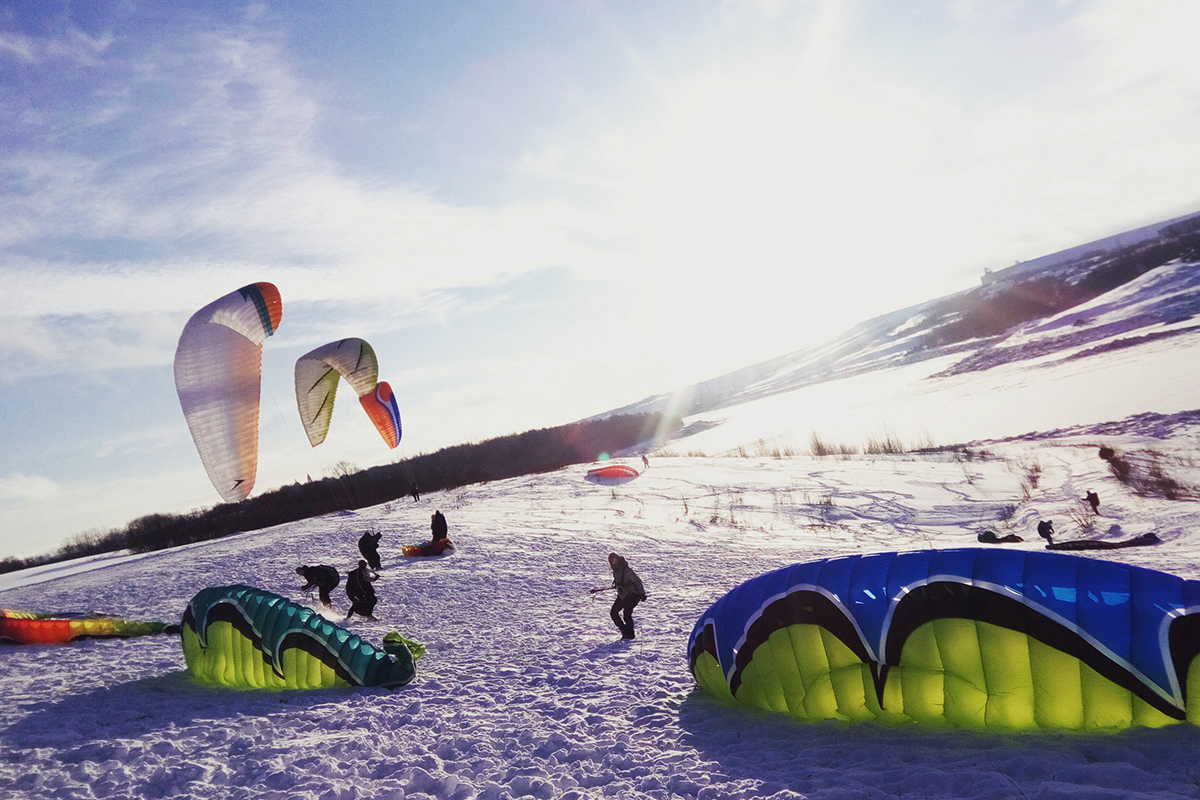- A
- A
- A
- ABC
- ABC
- ABC
- А
- А
- А
- А
- А
Fly with HSE Paragliding Club
 Training session at Fly HSE Club
Training session at Fly HSE Club
A great number of student associations and clubs at HSE involve students in a variety of activities from historical re-enactment to yachting. Fly HSE, a paragliding club, recently joined the list. The HSE News Service learned how you can get in, the time required to prepare, and whether you can fly in winter.
Fly HSE was founded in 2016 at the initiative of students who contacted Elizaveta Demina, a graduate of the HSE Faculty of Economic Sciences who is a professional paraglider pilot and owner of the Infinity Sky paragliding school. She started paragliding in 2008.
‘When I was studying, I had to combine studies, trips and flights’, Elizaveta said, ‘I remember how I was willing to fly and to study, and how I was incredibly limited in terms of money. Now I’m anxious to make the sky available for many people’.
The organizers are planning to create a university paragliding team that will be able to attend training camps abroad and participate in competitions.
The club’s first meeting in December generated considerable interest, and the first training group was formed. After two months of studies, some of them dropped out, and the group now has 20 members who are continuing active training. Members include HSE students, from first-year undergraduates to doctoral students, graduates, and even some staff members. The organizers decided to announce the second enrolment session for those who were unable to join the club in December. On February 10, 2017, at 7 pm, the orientation session will take place at the main HSE building on 20 Myasnitskaya Ulitsa, Room 125.
Who can fly
Paragliding is an intellectual sport that is largely based on concentration, and the main body part that works here is not the muscles, but the brain’, Elizaveta said. ‘You have to be able to assess four or five constantly changing factors and make the right decision quickly. This skill helps a lot in your future life. Of course, those who are already into another sport find it easier thanks to their developed coordination abilities. But people who are not athletes catch up thanks to their brains. That’s why it’s a pleasure to teach people from HSE – they are able to think!’
Paragliding presents only a few medical contraindications, including schizophrenia, serious motor injuries (inability to move independently), and obesity (weight over 160 kg).
What the classes look like
Members of the club meet twice a week. Theoretical classes last two hours and take place mostly at 20 Myasnitskaya Ulitsa. The training sessions take place 9 km away from the Teply Stan metro station in the Moscow region. Traveling from the metro station to the meeting point takes 15-20 min by bus.
Theoretical classes take place in parallel with practical ones. All lectures are video recorded, so you can watch them if you’ve missed the class. Practical training begins with preparations on the ground. The first flight takes place in a tandem: the student controls the paraglider and must perform six flight tasks, while the instructor flies together with them, backs them up and corrects their actions in the case of mistakes. When the ground training and the training tandem are passed, the trainees can progress to independent flights.
HSE provides club members with all the equipment. Participants can also buy their own gear (the price of a full set would be approximately EUR 3000), but this is not required at the beginner stage.
Beginner athletes require ideal conditions, which are found when there is no turbulence-causing convection in the air (upward and downward flows). During the winter, there is no convection when the temperature is below freezing, so they can fly the entire day. This is unlike the summer, when beginners can fly only early in the morning before the convection starts and late at night when it dissolves.
Safety
Three main safety factors should be considered before flying a paraglider. The first is the choice of weather conditions, which must align with the pilot’s skills and be conducive for the gear they are using. The second is the gear itself. Depending on the pilot’s goals and skills, the gear can vary from very safe (training paragliders) to dangerous (for professional sports). The third is the assessment of the pilot’s skills, as well as emotional and physical condition. If these three factors are considered, a paraglider flight is no more dangerous than snowboarding or alpine skiing. ‘We don’t fly in adverse weather conditions, we use only certified training-level equipment made in Austria, and, of course, we examine our students’ physical condition thoroughly’, Elizaveta said.
About the instructors
The club’s instructors come from the Infinity Sky school and Elizaveta Demina herself, who is one of the world’s Top 20 female athletes in the ‘Landing Accuracy’ category.

